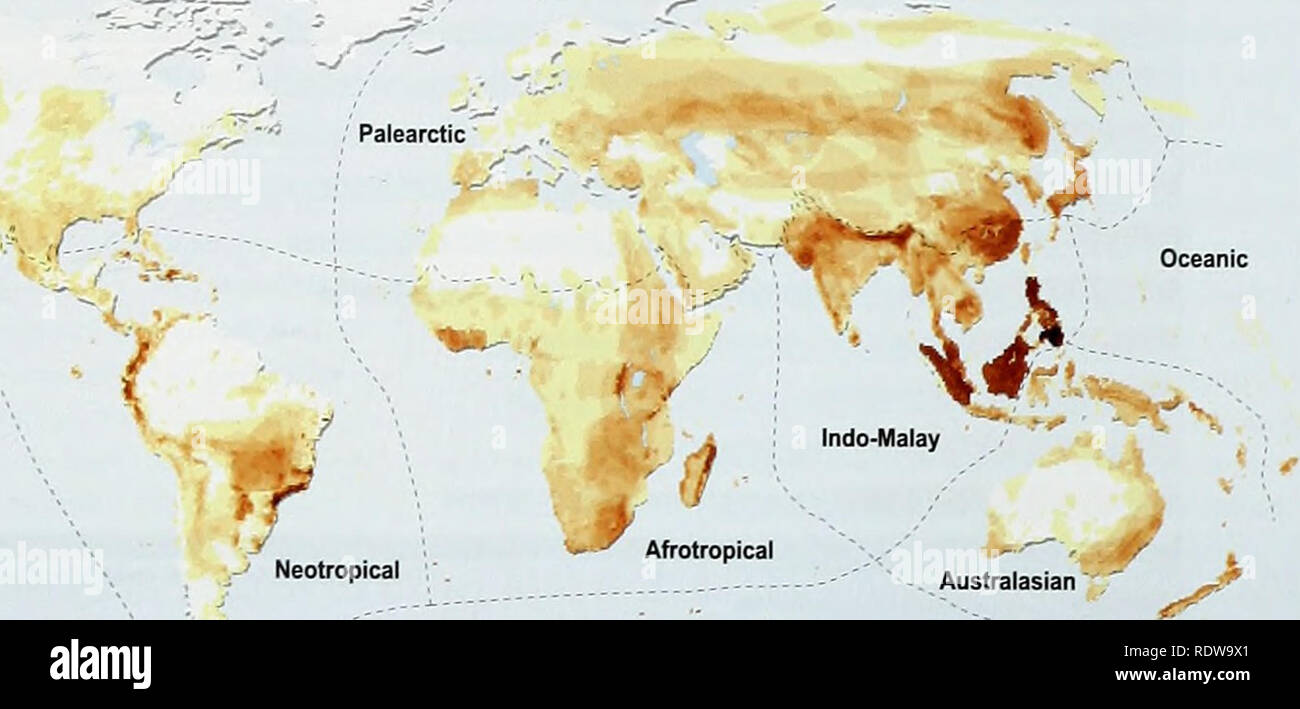. Ecosystems and Human Well-Being: Biodiversity Synthesis. Figure 3.5. Density Distribution Map of Globally Threatened Bird Species Mapped at a Resolution of Quarter-degree Grid Cell (C4 Fig 4.25) Dark orange colors correspond to higher richness, dark blue to lowest. (n=l,213) Nearctic Oceanic. Number of globally threatened bird species within a quarter-degree grid cell: 0 5 10 20 25 DDD11IIIIIIIIIII low Bird species density high Source: BirdLife International Biogeographic realm boundaries low threat rates and have experienced little conversion. Very highly converted habitats in the temperate

Image details
Contributor:
The Book Worm / Alamy Stock PhotoImage ID:
RDW9X1File size:
7.1 MB (234.6 KB Compressed download)Releases:
Model - no | Property - noDo I need a release?Dimensions:
2289 x 1091 px | 38.8 x 18.5 cm | 15.3 x 7.3 inches | 150dpiMore information:
This image is a public domain image, which means either that copyright has expired in the image or the copyright holder has waived their copyright. Alamy charges you a fee for access to the high resolution copy of the image.
This image could have imperfections as it’s either historical or reportage.
. Ecosystems and Human Well-Being: Biodiversity Synthesis. Figure 3.5. Density Distribution Map of Globally Threatened Bird Species Mapped at a Resolution of Quarter-degree Grid Cell (C4 Fig 4.25) Dark orange colors correspond to higher richness, dark blue to lowest. (n=l, 213) Nearctic Oceanic. Number of globally threatened bird species within a quarter-degree grid cell: 0 5 10 20 25 DDD11IIIIIIIIIII low Bird species density high Source: BirdLife International Biogeographic realm boundaries low threat rates and have experienced little conversion. Very highly converted habitats in the temperate zone had lower richness than tropical biomes, and many species vulnerable to conversion may have gone extinct already. It is in the high-diversity, moderately converted tropical biomes that the greatest number of thteatened vertebrates are found (C4.4.3). (See Figure 3.6.) Among a range of higher taxa, the majority of species are currently in decline. Studies of amphibians globally, African mammals, birds in agricultural lands, British butterflies, Carib- bean corals, waterbirds, and fishery species show the majority of species to be declining in range or number. Increasing trends in species can almost always be attributed to management interven- tions, such as protection in reserves, or to elimination of threats such as overexploitation, or they are species that tend to thrive in human-dominated landscapes (C4.4.1). An aggregate indicator of ttends in species populations—the Living Planet Index—uses published data on trends in natural populations of a variety of wild species to identify overall trends in species abundance. Although more balanced sampling would enhance its reliability, the trends are all declining, with the highest rate in freshwater habitats. (See Figure 3.7.) Genetic diversity has declined globally, particularly among domesticated species (C26.2.1). In cultivated systems, since 1960 there has been a fundamental shift in the pattern of intra- species dive